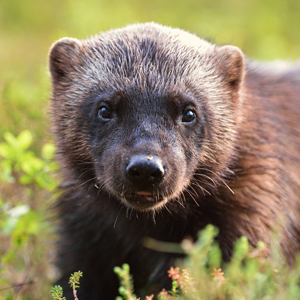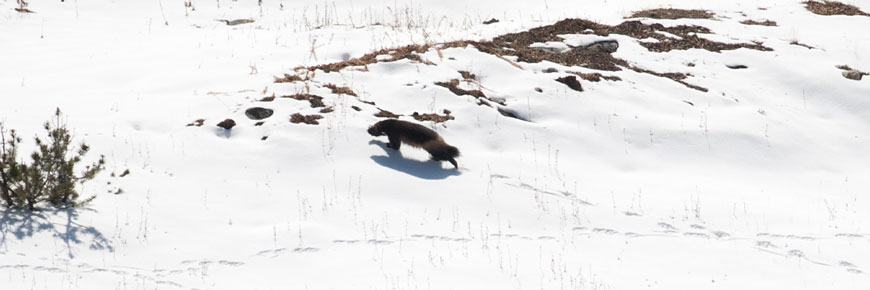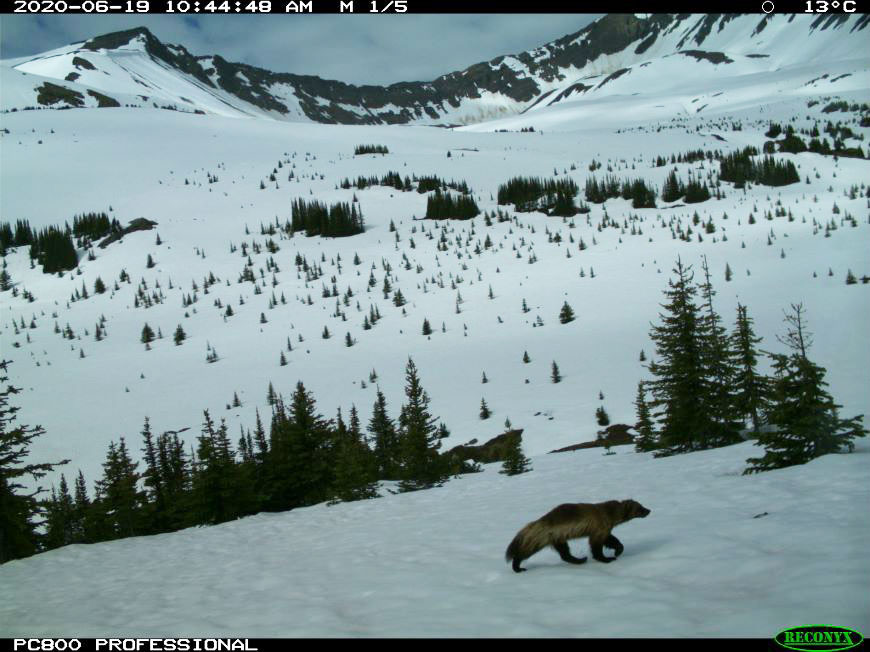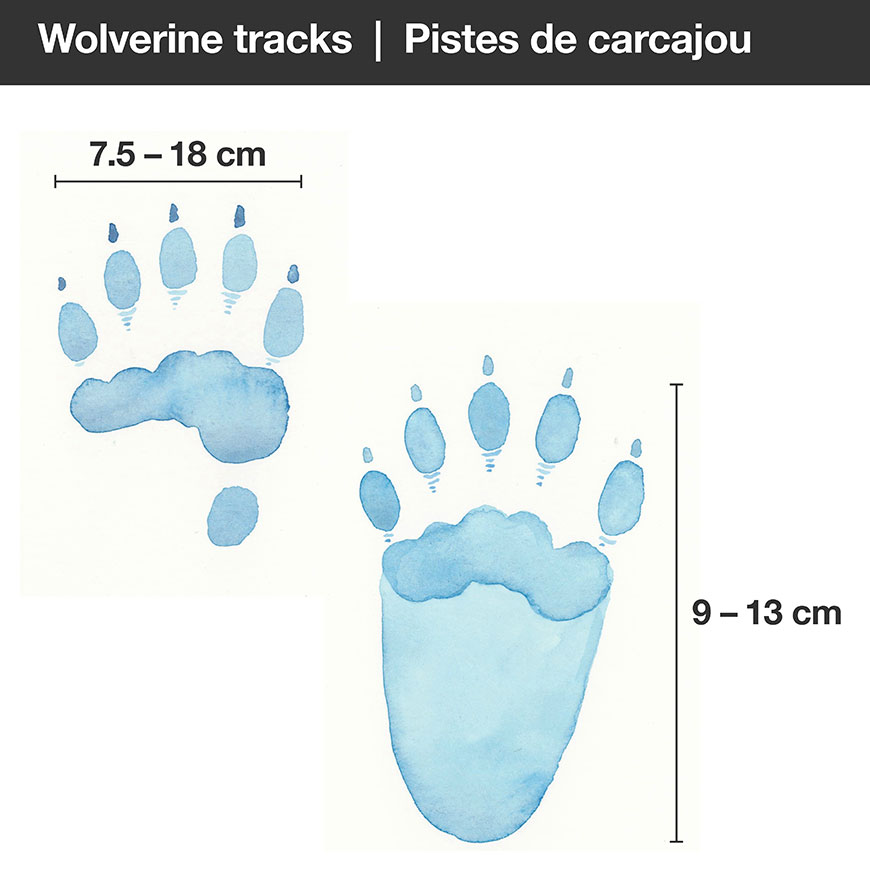
Wolverine
Jasper National Park
Quick facts
Eats animals as big as a caribou, dead animals of all sizes, and some plants
Lives of up to 17 years
Likes lots of space in remote places
Looks like a small bear with a bushy tail
SARA status: Special concern (2018)

Although they look a lot like a small bear, wolverines are actually enormous weasels. Their fur is a dark chocolatey brown, often with lighter patches on their throat, chest, or feet. Unlike bears, they have a long bushy tail.
Wolverines (Gulo gulo) cover an incredible amount of territory looking for food. Mountains and rough terrain are not a challenge: rather than taking the easy way around, they go right over steep sections to get where they want to go. They are almost always on the move! They stop only to eat, or nurse their young in dens that they have dug out under rocks or snow tunnels.
Wolverines are not picky eaters. Their Latin name, “gulo”, means glutton. Wolverines are scavengers and omnivores, eating both plants and meat. They scavenge or feed on the carcasses of animals killed by other predators or avalanches. They prey on mammals as small as a ground squirrel and as large as a moose or caribou. They also nibble on roots and berries.
Wolverines need large areas of undisturbed wilderness. This makes them great indicators of a healthy well-connected ecosystem.
Where they live
Our knowledge of this elusive animal and where it lives is limited. Both wolverines and grizzly bears are circumpolar, which means they are found throughout the cold regions of the northern hemisphere. Wolverines are known to live in forested wilderness, mountain environments, and the arctic tundra.
They have very large ranges and low population densities - spotting them is like finding a needle in a haystack! Males have home ranges up to 1 500 square kilometres.
Wolverines usually detect you long before you detect them. If you spot one, consider yourself very lucky. Most of our park staff have never laid eyes on this elusive animal. If you ski the backcountry, watch for wolverine tracks in the snow.

Why they are at risk
Wolverines have a low reproductive rate and rely on vast areas of uninterrupted habitat to thrive. This makes this species vulnerable to human activities that disturb their habitat and to the effects of climate change.
Habitat fragmentation
Wolverine habitat is protected by Parks Canada but as a species with large territories, this may not be enough. Both in and outside of the park, human development and activities like towns, roads and railways can break up the connectivity of their habitat.
Climate change
Wolverines are a snow-adapted species, so a warming climate will affect them. The anticipated effects of climate change on wolverines are not well understood.
How we are helping
Protecting habitat
The mountain national parks provide a large protected area of habitat for wolverines, with healthy ungulate populations for them to scavenge or prey upon.
Monitoring
We use remote cameras to find out how wolverines are using their habitat and to estimate occupancy rates.

Learn more
- Date modified :
